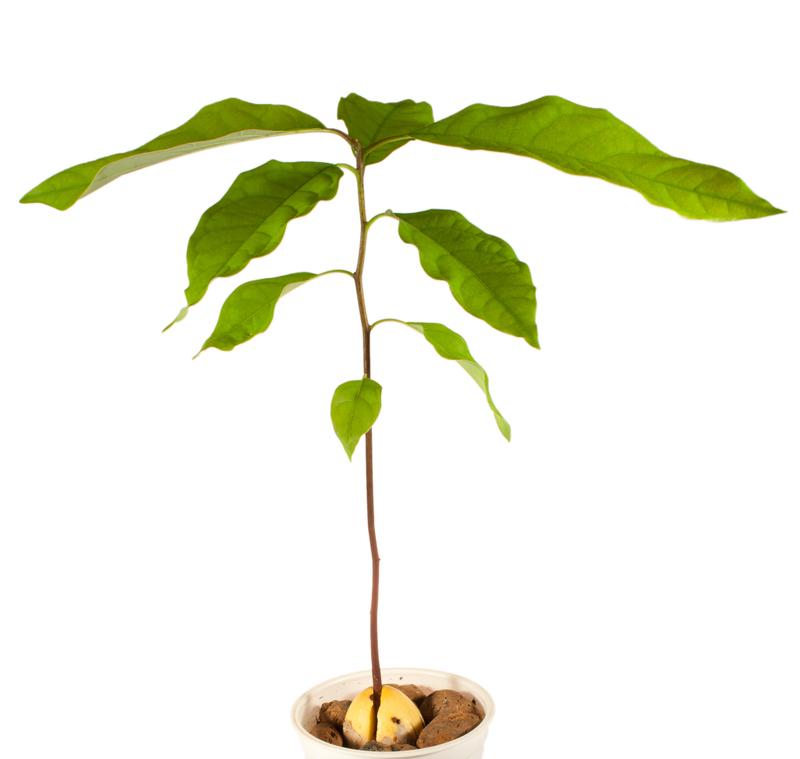Fortify Your Flora: Preventing Weather-Induced Harm
Posted on 27/08/2025
Fortify Your Flora: Preventing Weather-Induced Harm
Caring for your garden or indoor plants can be a deeply rewarding experience, but unpredictable weather brings unique challenges that can threaten the wellbeing of your precious flora. Whether you're cultivating a lush backyard oasis or a few leafy houseplants by the window, understanding how to protect your plants from weather-induced harm is crucial to maintaining vibrant, thriving greenery year-round. In this comprehensive guide, we'll explore the essentials of fortifying your flora against adverse weather, offer expert tips on preventing weather-induced plant damage, and highlight the best strategies for climate resilience in your garden.

Understanding Weather Threats to Your Plants
Before learning how to protect your flora, it's vital to recognize the types of weather that most commonly cause plant stress and damage. Weather conditions that often impact plants include:
- Frost and Freezing Temperatures - Sudden drops in temperature can cause tissues in plants to freeze, leading to cellular damage and even plant death.
- Excessive Rainfall - Waterlogged soil can suffocate roots and promote fungal diseases.
- Drought and High Temperatures - Extended heat and dryness wilt foliage, disrupt growth, and can cause irreversible damage.
- High Winds - Strong gusts often break branches, dislodge roots, and strip foliage.
- Hail and Heavy Snow - Ice can shred leaves, bruise stems, or even flatten delicate plants.
- Sudden Temperature Fluctuations - Quick swings from warm to cold stress plants, making them vulnerable to disease.
Each weather event requires specific measures for weather-proofing your garden. Continue reading to discover how you can anticipate and respond proactively to these challenges.
Assessing Your Garden's Vulnerability
To fortify your plants effectively, start with an assessment of your garden or indoor plant setup. Consider these factors:
- Location - Are your plants exposed to prevailing winds, or do they benefit from natural shelter?
- Soil Quality - Does your soil drain well, or does it retain excess water?
- Microclimates - Are there warmer, colder, drier, or wetter spots in your garden?
- Plant Types - Some species are inherently resilient, while others need extra protection from the elements.
*Addressing these components helps you identify where your flora is most vulnerable and informs your protection strategies.*
Proactive Measures to Fortify Your Flora
1. Choose Weather-Resistant Plants
A key step in fortifying your garden against adverse weather is to select plant varieties adapted to your regional climate. Native and drought-tolerant plants are often well-suited to withstand local challenges. When planning new plantings:
- Research and select species proven to thrive in your USDA Hardiness Zone or local equivalent.
- Choose varieties known for resistance to local diseases, pests, and environmental stressors.
- Diversify your planting scheme to ensure not all plants are susceptible to the same threat.
2. Proper Planting & Soil Preparation
A healthy root system makes your flora resilient against both drought and storms. Achieve this by:
- Planting at the right depth and spacing for each species.
- Adding ample organic matter like compost to improve drainage and soil structure.
- Amending clay soils with sand and loam for better water movement, or mulching sandy soils to retain moisture.
3. Mulching for Insulation & Moisture Control
Mulching is one of the most effective ways to protect plants from extreme temperatures and weather shifts. Benefits of mulch include:
- Insulating roots against frost and heat.
- Suppressing weeds that compete for water and nutrients.
- Improving moisture retention during droughts and ensuring even soil temperatures.
Spread 2-4 inches of organic mulch (like wood chips, straw, or shredded leaves) around the base of each plant, keeping the mulch a few inches from the stems to prevent rot.
4. Strategic Watering Techniques
Both overwatering and under-watering can result in weather-induced stress. Establish a smart watering routine:
- Water deeply but less frequently to encourage deep root growth.
- Use drip irrigation or soaker hoses for efficiency and soil stabilization.
- Water early in the day to reduce evaporation and prevent fungal diseases.
For container gardens or houseplants, ensure pots have adequate drainage holes and use self-watering planters during hot spells.
5. Windbreaks and Physical Barriers
Protecting plants from wind is essential in exposed areas. Consider:
- Planting dense hedges, shrubs, or trees as living windbreaks.
- Installing temporary barrier structures like burlap screens, lattice panels, or garden fencing.
- Staking tall or delicate plants to prevent bending or breaking in high winds.
6. Frost and Cold Protection Strategies
To shield plants from frost damage:
- Use floating row covers, old sheets, or frost cloths as overnight blankets for sensitive plants.
- Move container plants indoors or to a sheltered area during cold snaps.
- Water soil before a predicted frost--moist soil retains more heat overnight.
- Mulch heavily in late fall, especially over perennial crowns.
7. Coping with Excessive Rainfall
To avoid waterlogged roots and fungal diseases:
- Grow plants in raised beds for improved drainage.
- Incorporate gravel or sand into heavy soils around root zones.
- Monitor for standing water and redirect runoff away from sensitive areas.
8. Protecting Against Heatwaves and Drought
During periods of intense sun and heat:
- Shade cloths can reduce sun intensity and cool ambient temperatures for tender plants.
- Mulch to retain soil moisture and cool roots.
- Water plants deeply in the early morning before peak heat.
- Group potted plants together to increase humidity and shade roots.
9. Defending Against Hail and Heavy Snow
When severe weather is forecast:
- Cover delicate plants with overturned buckets, crates, or horticultural fleece for short-term protection.
- Shake snow gently off branches to prevent breakage.
- Build simple frameworks (hoops or stakes) to support protective coverings.
Smart Plant Care for Long-Term Resilience
Consistent Maintenance and Monitoring
Regular monitoring is key to preventing weather-induced stress before it escalates. Check your plants at least weekly for:
- Signs of water stress: wilting, yellowing, or leaf scorch.
- Pest or disease symptoms, especially after stressful weather.
- Soil moisture and drainage, particularly in new plantings.
Immediate response to problems--like pruning damaged growth, adjusting watering, or improving soil aeration--directly influences plant recovery and vigor.
Strengthen with Feeding and Pruning
Healthy, well-fed plants withstand harsh conditions more easily. Feed your flora according to plant requirements, using slow-release fertilizers or organic amendments for steady nutrition.
Prune judiciously to remove weak or dead wood and improve airflow, which fortifies plants in both wet and dry weather.
Gardening Tools and Products for Weather Protection
A variety of commercial garden products can enhance your plants' climate resilience. Consider investing in:
- Row covers and frost blankets for all-season weather protection.
- Horticultural fleece to insulate plants from cold and wind.
- Automatic irrigation systems with moisture sensors for precision watering.
- Quality mulch--organic or inorganic--for long-term soil protection.
- Plant supports, cages, or trellises for wind and hail defense.
*These tools are especially helpful for larger gardens or ongoing protection of sensitive species.*

Adapting to Climate Change and Unpredictable Weather
With ongoing climate change, unusual and extreme weather patterns are becoming more common. To future-proof your garden:
- Stay informed with updated local weather forecasts and horticultural advisories.
- Update your planting schedule and choose new resilient varieties as needed.
- Experiment with microclimates by grouping vulnerable plants in protected areas or using reflective surfaces to moderate temperatures.
- Practice soil restoration through composting, cover crops, and minimizing soil disturbance for maximum health.
Conclusion: Ensuring Strong, Weather-Resistant Flora
Preventing weather-induced harm in your garden or home is a blend of proactive planning, responsive care, and investing in the right tools and plant varieties. By following the strategies outlined in this guide, you can fortify your flora against nature's challenges and enjoy lush, resilient greenery season after season.
Remember, a strong, healthy plant is naturally more capable of coping with weather extremes. Careful observation, adaptive gardening methods, and a thoughtful selection of flora are your best resources for achieving a thriving, weather-proof garden.
- Assess your site, soil, and plant types for vulnerabilities.
- Prepare with mulching, windbreaks, and smart plant selection.
- Act swiftly to shield your plants from adverse conditions as they arise.
Fortifying your flora is an ongoing process, but with knowledge and preparation, your plants can weather life's storms with strength and vitality.
Related Resources
- USDA Plant Hardiness Zone Map
- How to Protect Plants from Cold, Wind, Rain and Sun
- University Extension: Mulches for Home Gardens
Start fortifying your flora today--your plants will thank you with robust growth and enduring beauty!

